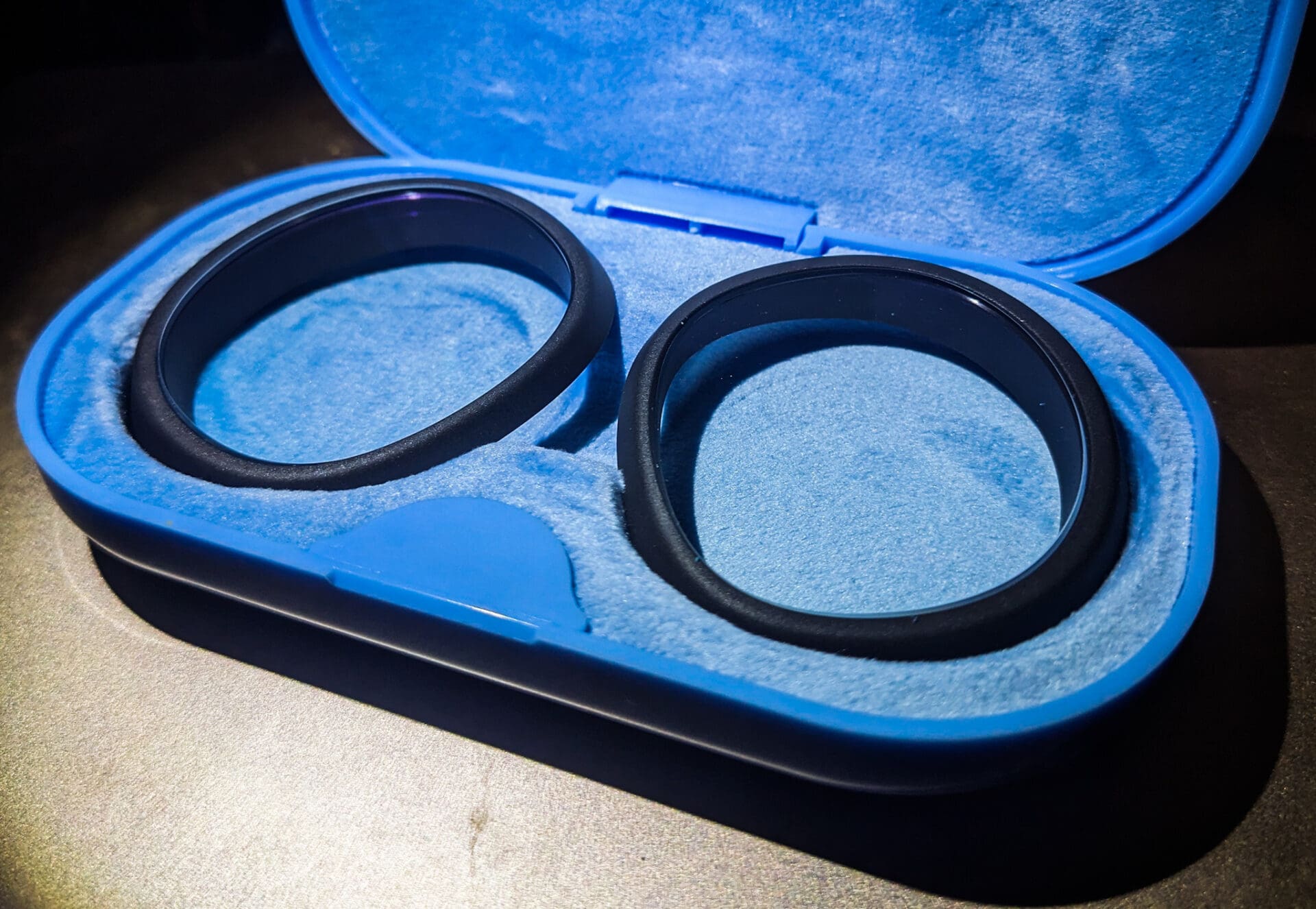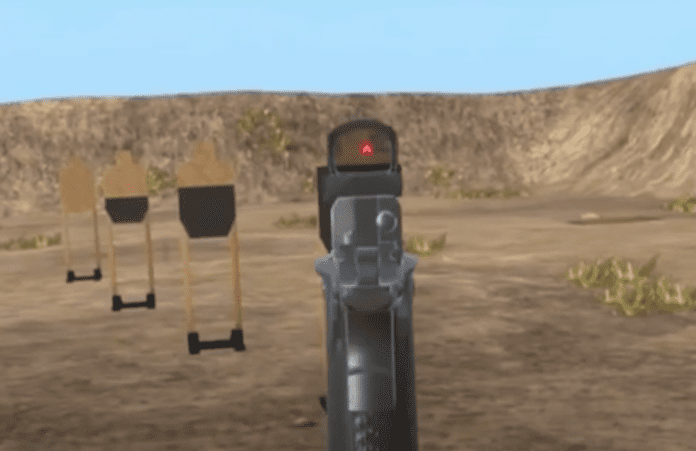A few weeks ago, I reviewed AceXR’s VR firearms training system, and was very impressed. For those who like to incorporate VR in their firearms training, today’s VR systems have really good motion tracking, not only for which way your head’s moving, but also for which way the controllers and even your own body moves. They also track the room around you, so the experiences feel increasingly realistic. AceXR adds to the realism by having your VR controller dock into a training pistol with realistic weight and a trigger that acts like the real thing.
My brother commented that “It’s like shooting a competition with a .22 pistol with a bull barrel.” And, I think that’s about right. With a realistic environment, a realistic gun, a realistic trigger and realistic physics, the only thing missing is recoil. The end result is that it’s like dry fire practice, but with the ability to practice a lot more than basic marksmanship. The Primary Arms ACSS Vulcan optic is even available!
But, I was still struggling a little to hit some of the targets, and wasn’t really sure why. This was an especially big issue for small targets at a distance, where it was obvious that I just couldn’t see them very well. But, with a couple of upgrades, I’m not having any trouble at all, even with the smallest targets at the end of the range. Here’s a cropped video to give you a better idea of what it feels like (original video here).
This time, I used a Quest 3 (my old headset was an Oculus Quest 2). I also added some prescription lenses to the unit. As you can probably see, when the target moves out to 40 yards, it’s still pretty hard to see, but it’s just visible enough to still shoot, when before it was getting too blurry to actually see.
Let’s talk a bit about how these upgrades made the difference.
First off, the Quest 3 has higher resolution. That’s possible to see in videos like mine, and in videos that big time VR reviewers have been sharing on the internet. But, one thing you can’t see in videos is that the Quest 3 also has much sharper and easier to use lenses. Instead of Fresnel lenses, which have a small “sweet spot,” the Quest 3 uses pancake lenses that have greater clarity, less distortion and less motion blurring and “god rays”.
In other words, the difference is much greater than you can see on YouTube.

Another thing that helped even more is snap-in prescription lenses from Zenni. Because VR headsets give you 3D vision and the appearance of some things being far away, you end up needing glasses just like real life.
Before, I was wearing glasses or contacts while using VR headsets. While that works OK, you have to be careful to not let the glasses rub up on the VR lenses and scratch them. Then, the gap between your glasses and any imperfections in your glasses introduces blur into the view. So, this is less than ideal.
These Zenni lenses snap right in front of the VR lenses. This means you get not only a much clearer picture, but they protect the expensive VR lenses from scratching. Given that the headset I bought was $650, having some $75 lenses that can be replaced is a great insurance policy. The lenses can be bought without a prescription for those of us with natural great vision.
Is It Worth The Extra Expense?
I’d say the answer to that question is both “yes” and “no.”
If you have the money to buy a Quest 3 and prescription lenses, I’d say go for it. The extra clarity makes a big difference in terms of comfort and in terms of hitting those more difficult targets. My whole setup (including AceXR) comes in at about $1,150, but only because I added a premium head strap with a secondary battery, and I went with the 512 GB version of the Quest 3. With the 128 GB model ($500), the lenses ($75 shipped) and AceXR, you can get pretty much the same experience for $825.
If $825 sounds too steep, the $250 Quest 2 (about $500 total after you buy an AceXR subscription) is still a great option. For most drills, you’ll have no problems, and prescription lenses are available for it, too. You might find yourself struggling with some of the further targets, but for everything else, it’s fine.
I think the extra clarity and having a larger “sweet spot” for the lenses helps with faster drills just a little, but it’s not going to make me get into the top ten! There are some really good shooters in AceXR who are running circles around me.





Ken Hakathorne was correct. That’s right I said it.
If you can afford optics on your handgun?
Then open up your wallet and start pouring out that money. Yes the police do have handgun optics. And the government can certainly $$$ afford it.
But you mister and mrs private individual citizens, mostly can’t afford, and don’t probably need them.
Btw
I did find an optic for I think less than $50 for my ruger p89. And I’m still in the evaluation phase.
What Pro-2A Items Were Trashed From Congress’ Spending Bill?
https://www.youtube.com/watch?v=oQ7NkskBM8g
2 New Constitutional Carry States This Month?!?
https://www.youtube.com/watch?v=qhcEa32lNHc
Wow, Biden’s ATF Director Doesn’t Know Difference Between Mags & Clips.
https://www.youtube.com/watch?v=VeccKccEpy8
Thanks Jennifer. Thinking about giving the AceXR VR thing a try.
The Quest 3 is a very good headset, with lots of nice features and capability. It’s too bad it comes from the eavesdroppers and censors at Meta (Facebook).
I wonder if such systems will face unexpected bans from Meta’s DEI/ESG police? After all, they have already infringed repeatedly upon free speech rights across the other platforms they control, so why not kick apps featuring 2A content they don’t approve of?
Anyway, this is an interesting way to get some firearms practice in the interim!
How exactly is playing video games actually training? It is NOT training! Want training, it has to be in real life. Go to the range. Geez, what’s the matter with people?
its not training in the sense of practical fire, its training assistance for focus in the sense of dry fire. In other words it just gives something to focus on for general dry fire to practice general basic technique with a ‘visual feedback environment’. There have been systems for this purpose for a long time, for example, the MantisX dry fire training system, this one is just done in the VR aspect. Its just a fancy dry fire training system, and a little more fun than the standard ‘laser based’ offerings.
I think I would buy a CO2 replica with the blowback and practice with BBs in and around the woodshed, barn, even the basement.
Then spend the rest of the money on a new lever action.
Jack Wilson didn’t have an optic on his gun. When he took one 20 yard shot and stopped a church shooter in Texas.
And Elijah Dicken Didn’t have an optic on his gun. When he shot a mass shooter at an Indiana shopping center. Who was 43 yards away.
And Wild Bill Hickock didn’t have an optic on his revolver. When he shot and killed a guy, over one hundred yards away. In 1877?
Once you have mastered the iron sites on your handgun, then perhaps you can spend the $$$ on an optic.
The “gun accessories industry” wants all of your money.
Comments are closed.